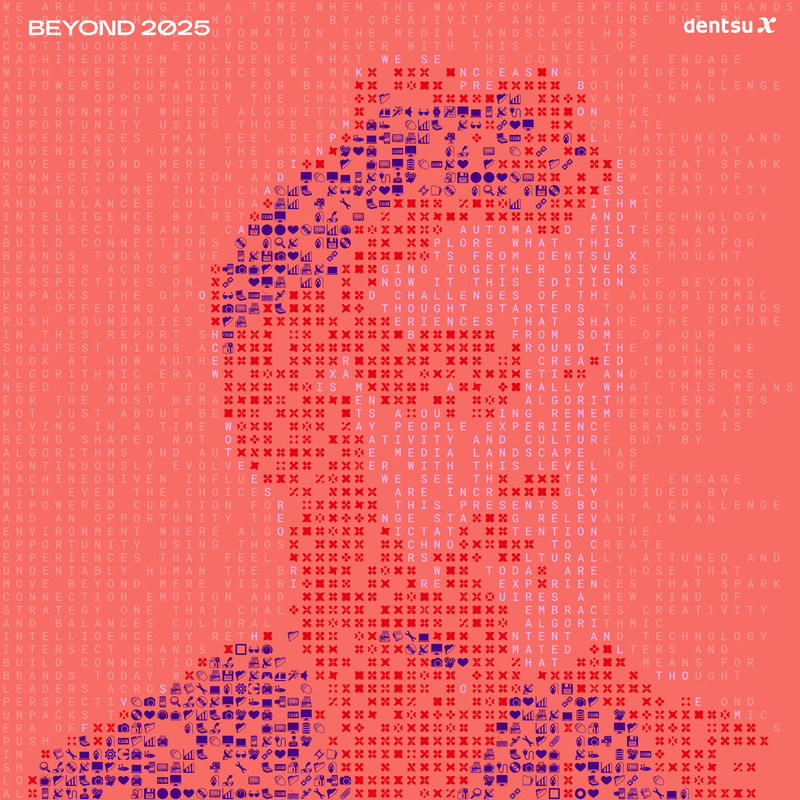This blog is inspired by dentsu’s Beyond 2025: Winning in the Algorithmic Era, a global thought leadership series exploring how brands can navigate a future shaped by AI, automation, and always-on algorithms.

We have entered a new age when physical proximity is no longer the core metric for identifying and defining community. Almost half of age 18-29 (47%) believe it's easier to find communities they relate to online rather than in person.
Modern communities are cultivated through a constantly evolving combination of physical, mental and emotional immediacy. Physical community still exists and, with it, our physical identities, but our digital world has allowed people to embrace new parts of themselves and to find like-minded groups not restricted to place or time. Today, our social circles, digital communities, and ability to explore and express our identities are limited only by the speed of our internet connection.
But what is driving the evolution? One answer is that our very identities have shifted and evolved. We are no longer limited to just one version of ourselves. Beyond our physical states, we are many identities online. As we engage more with our digital communities of singular interests, we develop opinions, inside jokes and ultimately a broader, shared language and unique expressions only known to the digital community. Our bubble becomes airtight as we reinforce and reaffirm one another’s identities and ideas.
With this type of near-universal enablement of community, it wouldn’t be far-fetched to assume that perhaps digital accessibility is a solution for the rising levels of loneliness observed in global society. Yet, the current reshaping of community and identity is not without conflict, more specifically, generational conflict.
Unlike Gen Z, many older generations still hold fast to physical proximity being the core definition of a community - 64% of black American boomers define community as the people with whom they share neighborhood physical location. Today, particularly in America, the number of physical communal spaces has dwindled. Conversely, the amount of time spent with online media has increased. What is perhaps alarming is that as digital replaces the physical community, loneliness grows, too.
Dentsu’s Consumer Vision 2035 report highlighted that as of 2025, 40% of Gen Z feel at risk of loneliness. It seems traditional marketing hasn’t helped. Between 2012 and 2024, the number of global MarTech solutions grew by 4000%, while the average marketing budget as a percentage of net revenue declined by 26%. It was easier to follow the consumer and target the individual need in singular interest communities than to create shared mass moments. As the algorithms that filter everything for you grow, this disconnect could get worse.
A recent dentsu report, The Year of Impact: 2025 Media Trends, details how dynamically personalized algorithms have reshaped the ways people find one another and come together online. The algorithms are the gatekeepers that optimize to the individual. This presents both a new challenge and a powerful opportunity for modern brands. Algorithms, performance martech, and singular identities don’t have to be designed for isolation, they can foster the community consumers are requesting.
Brands have a role to play, too. Seventy-four percent of Gen Z fans like seeing brands engage with things they like. Sixty-two percent of young US adults said they’d be motivated to buy a product or service if it helps them achieve a sense of community belonging.
If marketers are to build authentic partnerships with communities, they must work with trusted creators and influencers within the community to connect the brand’s purpose with the group’s purpose.
A good first step for brands is to seek to cultivate and support communities where they naturally exist. These media and content-based communities may appear niche to some, but in reality, there are podcasts, Reddit topics and YouTube creators that have attracted communities the size of small nations. Followers of the Joe Rogan podcast alone outnumber the total population of the Netherlands.
Modern brand-building makes space for the old physical and the new digital; it balances the broad physical spaces of community while dynamically adapting to digital communities. Brands speak in their own tone to the masses but equally leverage the voices and tonality of the communities they wish to engage. In this Algorithmic Era, brands are required to think differently about community engagement and perhaps welcome the algorithm gatekeeper into the community.
True brand growth, just like community, requires commitment.
To explore more trends and brand implications, download Beyond 2025: Winning in the Algorithmic Era.

